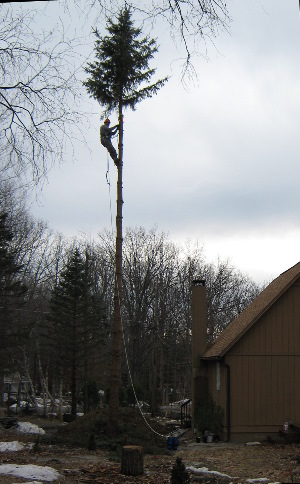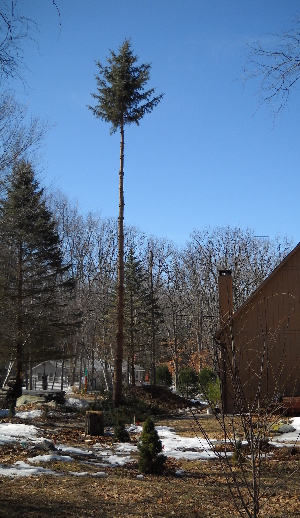When I was first climbing with spurs, I seldom put a rope in the tree before I climbed it. I would tie a line to my belt, click my strap to one of the rings and start up the tree. Nothing but hands and spurs until I got to working height then throw the strap around, catch it, click in, lean back, then pull up the saw and any ropes needed with my "getting line". The only times I used a strap or lanyard, to climb with, was on trees bigger than about 30 inches DBH. The few times I gaffed out, both spurs, I had no problem hanging on and resume climbing.
All was fine for several years, got married, started a family, Wife came and watched me work one day and that was the end of that. Rope in the tree, around my butt, bowline with a tail tied in a blakes hitch and a strap or flipline around the tree before a spur touches bark. Working with folks that would love to tell her if I went back to my old carefree ways. Just a good thing I never let her see me foot locking up a rope with no safety line!
Now I use a full harness, always have someone who's only job is to watch for something to go wrong, am always tied in two ways with one being a rope. Of course I can no longer bench three times my weight, dead lift twice it, or curl nearly half. And that's not all because I weigh more!
Last week I had occasion to use my 80 cc mack with a 30 inch bar, up a tree, taking down a big Sycamore, and it sure was harder than when I used to do that when the saw was new.






